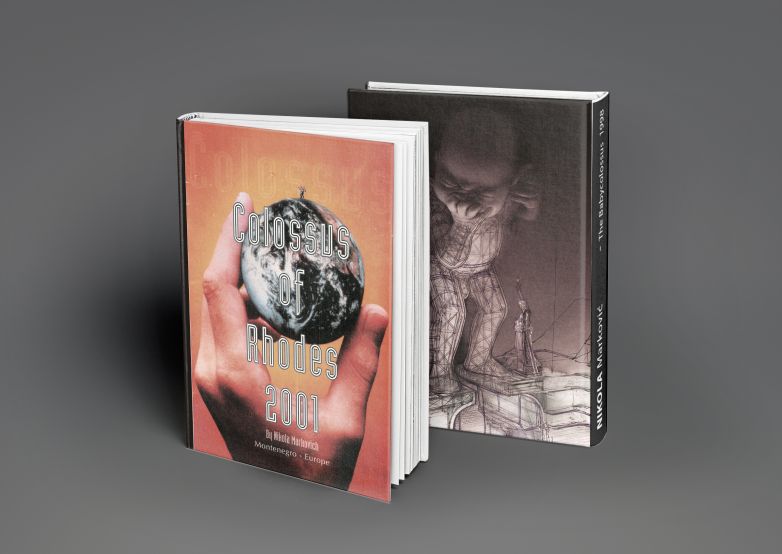- Published in Publications
The New Colossus of the New Millennium 291 BC – 2000 AD By Nikola Markovic
It is said that historians do not write history which may well be true. The story of civilization was first hewn in stone, carved in wood, or maybe buried in the prehistoric volcanic ash of Africa in the shape of the footprints of the first family some 3.5 million years ago. Back in antiquity, it was the readily available rough components found in nature that gave man his first lasting history - autochthonous tools and resourceful material that he used to shape his environment. This reasoning animal, ready to express his emotions, by filling the spatial and visual vacuum with tools and artifacts, has left a lasting trail in the temples, canals and statues built to celebrate the glory of gods.
My original determination to study antiquity is based on some ancient and unknown music, which haunted me occasionally, creating images and impressions which belong to these very old ages. Those lavish and clear images helped me understand the motives which initiated such power in artists of ancient civilizations so as to recreate their idols in the dimensions we see today as wonders of the world. Building the Pyramid of Cheops, the Corinthian Canal or the Colossus of Rhodes, man the social animal and man the technologist had come of age. The latter of the ancient wonders was a monument built to honor the 305 BC battle for the defence of the besieged city of Rhodes. It was a colossal representation 110 ft. tall, the life’s work of Chares of Lindos built to celebrate the victory over Demetrios Poliokretes. Built astride the entrance of the Port of Rhodes, the biogenic arch, bridging the mouth to the harbor, surpassed the Egyptian masters in art form and human largesse. It symbolizes, we can surely say, man’s temporary and occasional victory over nature, as well as the task of making peace among men as a perpetual historical temptation. Throughout the ages, this colossal statue dedicated to the sun god Helios, became the axle and the wheel, the creative drive for many monumental projects of art on the border between sculpture and architecture. Perhaps one of the most recent examples is the famous Statue of Liberty of New York Harbor whose stature and aureole bear a striking resemblance to the monumental sculpture of Rhodes. Since its unveiling, first on the river Seine in Paris (the model is still there on display) and then officially in New York on 4 July 1886, nowhere did the message of the “guiding light” find its most intrinsic meaning and application as in this new, future symbol of the global children’s industry.
Promoting the future global symbol of child for the New Millennium, this gigantic 147-meter high sculpture of the new Colossus, recreated in the form of a baby boy will capture us with its imagery and antics of adolescence, marking the tri-millennial threshold. This feat of the ages, constructed out of high-tech materials and visual wizardry (holography) is to be displayed at the Pompidou Center in Paris and Rhodes itself, at the original site. The baby colossus unveils the greatest secret to us in sheer realism, as to prevent any doubt in what it wants to say. The Baby-Colossus is intended to promote the cause of children and make their plight in the modern world more visible and assertive. Revealing a great secret of unprotected generations of newborn babies, this statue points out many dangers such as human cloning which I believe will happen in the millennial year, the year that takes upon itself the task to promote a historical symbol of the child – a man to be – a child crying for freedom, democracy and prosperity. With a powerful media campaign, this colossal sculpture of a baby would soon unite the boundless and unshown energy dedicated to children of earliest age. A direct contact with impressions that the gigantic newborn baby creates does not but provoke deep admiration before an image of the first touch of life. What is exquisite about this sculpture is its genuine and persuasive power, suggested by nothing and intended for nothing. It exists by itself and for itself, and the more we look at it we realize that it can start breathing or moving any moment. If we take a better look at its radiant aureole, we will recognize, through memory or emotion, the still young Colossus of Rhodes. Maybe this newborn baby angel can really replace the mythological wonder of the world!
